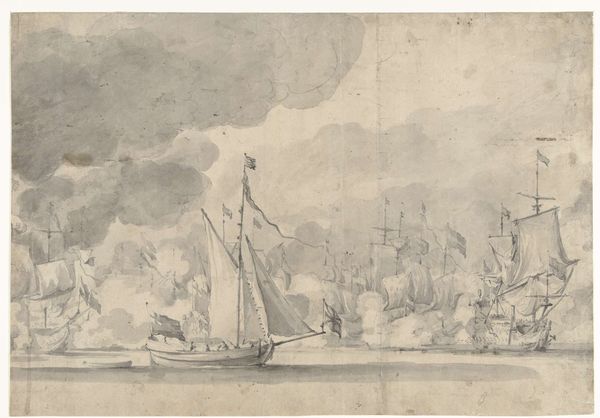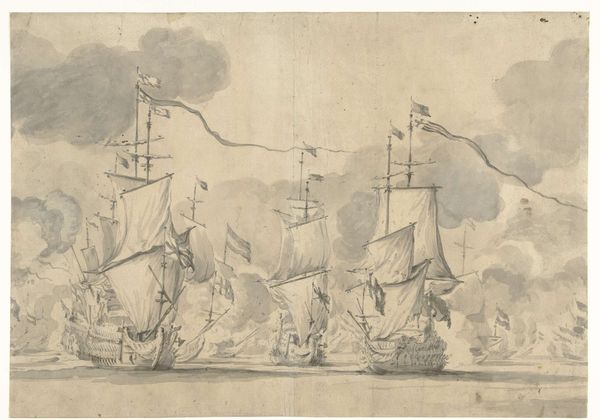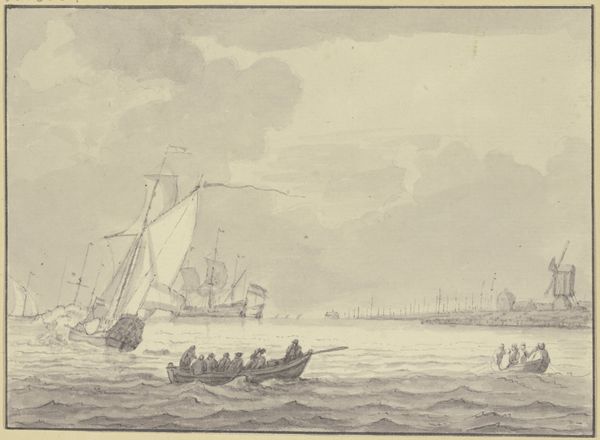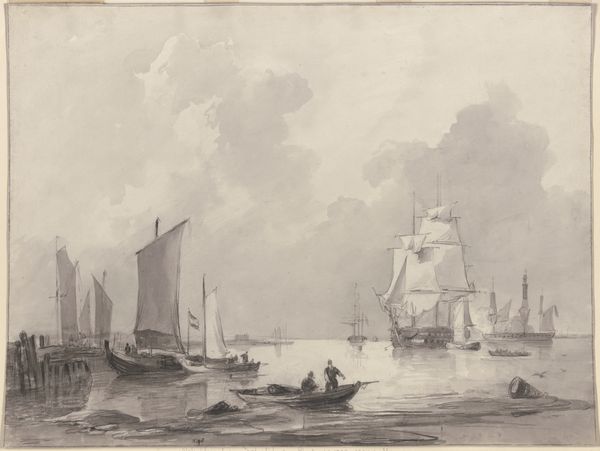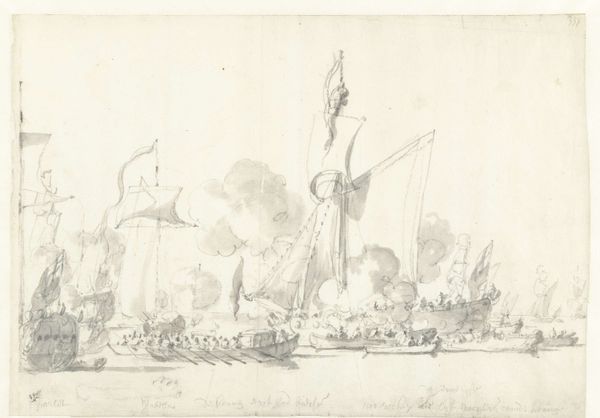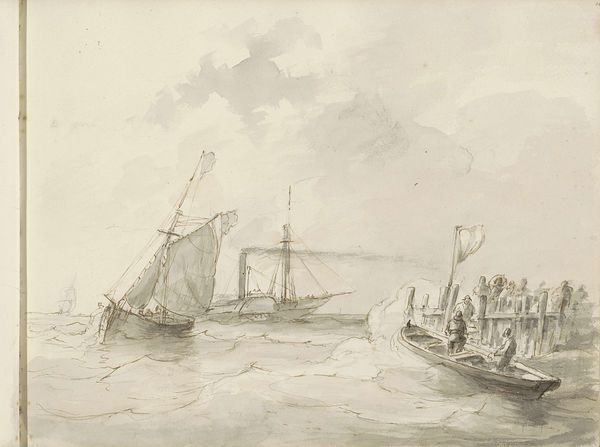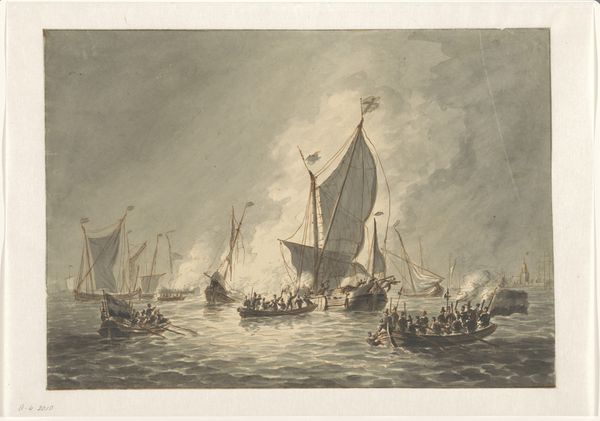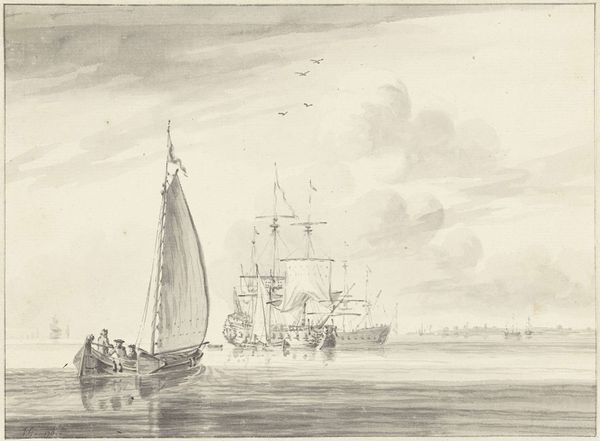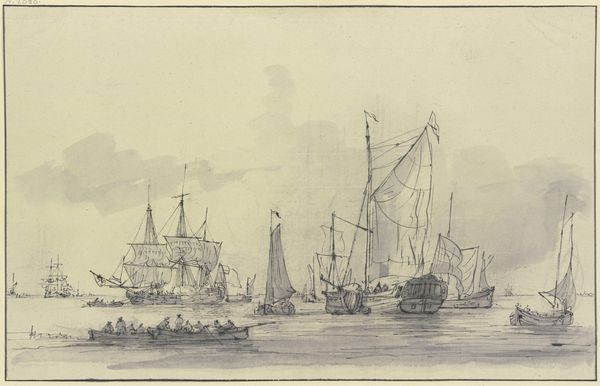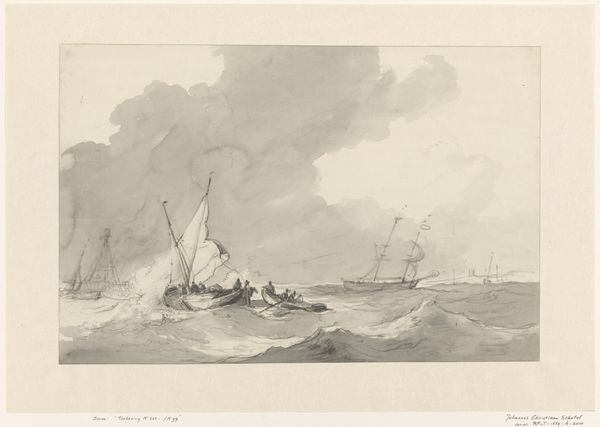
Aankomst van prins Willem Frederik op het strand van Scheveningen, 30 november 1813 1813
0:00
0:00
anonymous
Rijksmuseum
drawing, paper, pen
#
drawing
#
narrative-art
#
landscape
#
paper
#
romanticism
#
pen
#
history-painting
Dimensions: height 573 mm, width 770 mm
Copyright: Rijks Museum: Open Domain
Editor: This pen drawing on paper, titled "Aankomst van prins Willem Frederik op het strand van Scheveningen, 30 november 1813," captures quite a historical scene. It has a really dynamic energy. The figures are so expressive. How do you interpret this work, especially considering its medium? Curator: Well, let's consider the material conditions of its production. The choice of pen and paper is significant. It allowed for relatively quick reproduction and distribution of this image. Think about it - prints could be made. It's less about high art, and more about conveying information to the masses. It becomes a document, almost like a news report, celebrating a pivotal moment, Prince Willem Frederik's return. Editor: So, you're saying the *drawing* is a medium that disseminates the *message*? It wasn’t about an aesthetic experience per se? Curator: Precisely. The labor involved in producing multiple prints contributes to shaping public opinion, which emphasizes Prince William's impact. Consider the accessibility. Unlike a monumental painting displayed in an elite gallery, this image could reach a wider audience, shaping popular understanding and, arguably, consolidating power. It’s about the materiality of influence. Editor: That’s a really interesting perspective. I hadn’t considered the reproductive capacity. How does that inform its message of Dutch nationalism? Curator: The use of a reproducible medium helped solidify a particular narrative of nationhood. Think about how those images circulated; where might they be found? How were they consumed, and how did they contribute to the broader political landscape? The drawing's accessibility creates and reinforces its value as a national symbol, less about the artistry and more about manufacturing consent through readily available imagery. Editor: So, the seemingly simple choice of pen and paper reveals the intricate relationship between art, labor, and the construction of national identity. That completely reframes how I see this image! Curator: Indeed. It makes you question how national narratives are packaged and disseminated, doesn't it?
Comments
No comments
Be the first to comment and join the conversation on the ultimate creative platform.

